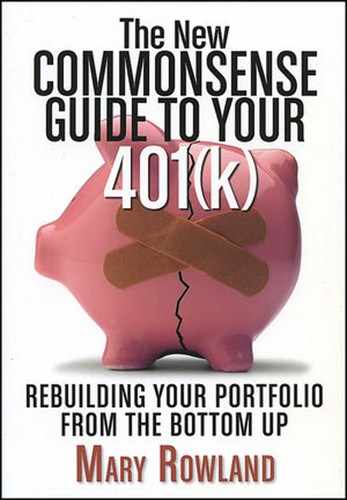IF YOU'VE been reading along straight through this book, you remember that when Ted Benna designed the first 401(k) plan in 1981, what set it apart from a run-of-the-mill savings plan was that the employer offered a match to those employees who made a contribution. The match makes the magic. Without it, many employees would still contribute to get tax advantages. But surveys show that it is the match that is most important in persuading employees to sign up.
And it is the match that guarantees you a return on your money that you cannot get anywhere else. When you search for an investment that pays a good return, you will never find another that offers "free" money so that you have an immediate return as soon as you invest. The most common match is 50 percent of the employee contribution up to 6 percent of salary. The math on that is pretty simple: Say you earn $100,000 and you contribute $6,000 to your 401(k) plan, or 6 percent of your salary. Your employer kicks in another $3,000 or 50 percent of your $6,000, providing a 50 percent return on your money before you've made any investment at all. But what if you earn $60,000 and you contribute $6,000? Your match will be lower because you are contributing a larger percentage of your salary, 10 percent to be exact. Your employer matches half of the first 6 percent—or $3,600—making a contribution of $1,800.
In 2000, about 90 percent of employers provided a match and those companies that were changing their plans—and tinkering with the match—were generally increasing it to make the plan more generous. That's not the case after the stock market tsunami of 2008 though. It seemed that every day in the first half of 2009, plansponsor.com reported on more companies that dropped the employer match, oftentimes "indefinitely."
For example, at the end of March, JPMorgan Chase dropped its match for all employees and said it will reevaluate the plans later. However, employees earning $250,000 or more at JPMorgan Chase "will see their contributions discontinued indefinitely," a bank spokesman said. The move to cut the match indefinitely for employees earning more than $250,000 is an interesting one. The Obama Administration tagged earners of $250,000 and over as "the rich" and said these rich folk would pay more taxes going forward. That and the attitude of Americans that these Wall Street "rich" were to blame for our economic collapse must have made it easier for JPMorgan to make that decision.
On the Wall Street of earlier years, firms would have been reluctant to penalize "the rich" like this lest they lose them to the competition, but not any longer. A survey by Spectrem Group found that just over a third of U.S. employers cut back or cut out the match between January 2008 and February 2009. But these are the kinds of changes that spread in ripples that one day reverse themselves and head back to some more neutral position.
Employee benefits consultants, though, warned that cutting the match could be a disaster for employer/employee relationships. Bill McClain, a Mercer retirement consultant who conducted a survey on that topic said that while the loss of one year's employer contribution won't "have a huge impact" on an employee's retirement benefit, a reduction can weaken benefits already hit hard by declines in equity values. Further, it would prohibit employees from buying equities with the "match money" at historically low prices. He urged employers to try to identify cost savings that would only minimally affect employees' nest eggs.
If your employee does provide a match, don't let it slip away. Even if the match is offered only in company stock, which is not a good choice for 401(k) plan, I think you should put aside enough money to capture it.
